Researchers and advocates around the world are looking for ways to help address the PFAS problem. Here is a quick look at some of these projects in their various stages of development.
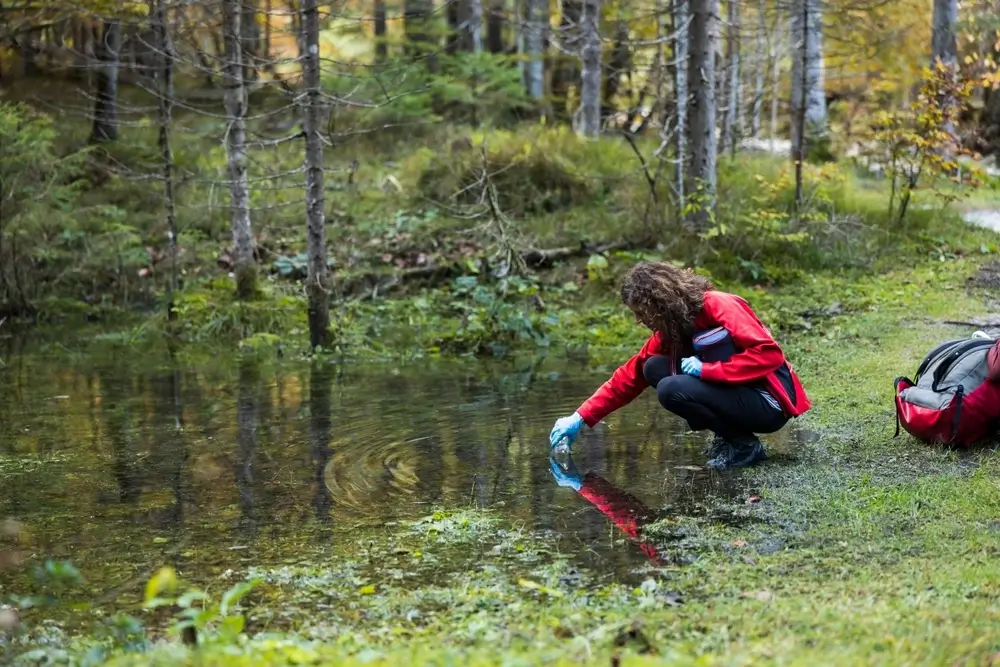
They’re in the sewage sludge that farmers spread on fields as fertilizer, the pesticides used to control insects and the groundwater pumped for irrigation. They’re linked to health problems ranging from cancer to thyroid disease, and the U.S. Environmental Protection Agency has said no level of exposure to them is safe.
Perfluoroalkyl and polyfluoroalkyl substances, the class of chemicals more commonly known as PFAS, are everywhere, not just in the world of agriculture. Since the 1940s, chemical companies such as Chemours, DuPont and 3M have developed more than 14,000 PFAS compounds for use in products as varied as nonstick cookware, electric-vehicle batteries and refrigerators. Because all PFAS contain bonds between carbon and fluorine, among the hardest to break in chemistry, they’ve earned the moniker “forever chemicals” for their remarkable persistence in the environment.
The problems with PFAS are daunting, but people are now mobilizing to reduce the dangers they pose. At the federal level, the EPA recently enacted its first enforceable limits for six PFAS in drinking water, as well as placed two PFAS on the list of hazardous substances covered by the Superfund law. And in communities across the country, researchers and local officials are testing out innovative approaches.
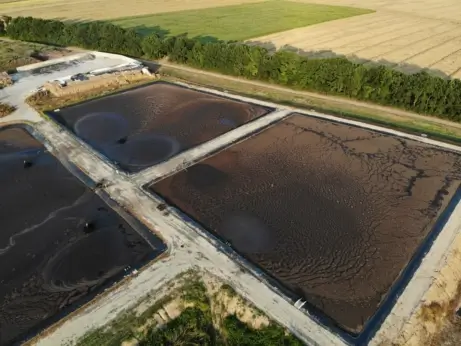
Sludge tanks at a water treatment facility. Photography via Shutterstock.
Beth Valentine’s inaugural fund
The leading edge of state-level responses to agricultural PFAS can be found in Maine. In 2022, its legislature became the first in the US to ban the field spreading of PFAS-containing sludge, and earlier this year, its Department of Agriculture, Conservation and Forestry opened applications for the country’s first fund to help farmers deal with PFAS pollution on their land—with $65 million allocated so far.
“There are still many unknowns concerning how PFAS travel through [different substances] and to what extent they are taken up in various food products,” says Beth Valentine, the fund’s director. Because of this uncertainty, Valentine says farmers need time to identify and implement strategies to deal with PFAS.
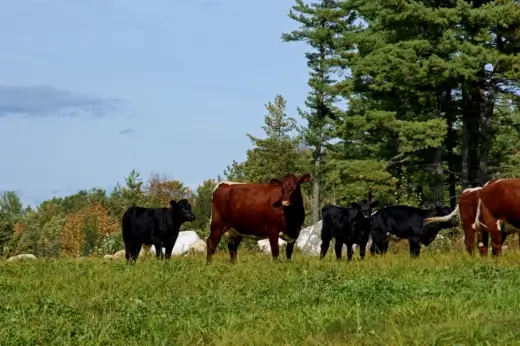
Cattle graze at a farm in Maine. (Photo by Shutterstock)
The bulk of the fund will give farmers financial and technical backing as they plan for changes in their business. About $20 million is also set aside to purchase and manage land that’s too contaminated to work, with the goal of eventually making it suitable for farming again.
While the fund’s initial allocation is expected to last for five years, Valentine says it will seek additional money from state and federal governments, as well as through litigation against PFAS manufacturers, for ongoing operation. “PFAS are nicknamed ‘forever chemicals,’” she say. “Agricultural producers are likely to need support for years to come.”
Jessica Ray’s selective carbon
Scientists know that one widely available technology is pretty good at removing PFAS: activated carbon, a processed charcoal that captures chemicals in countless tiny pores. The issue, says civil and environmental engineer Jessica Ray with the University of Washington, is that activated carbon is even better at removing everything else.
Because PFAS chemicals are usually present at much lower concentrations in wastewater than other pollutants such as drugs and pesticides, Ray explains, those more common contaminants can fill up activated carbon’s filtration capacity first. She and her colleagues have thus been working on a way to make carbon choosier.
Ray describes her approach as “kind of a lock-and-key mechanism for PFAS removal, where we’re building the lock and the PFAS molecule is the key.” She allows a reusable plastic polymer to form around a specific PFAS in the lab, then washes away the chemical, leaving behind microscopic impressions in the polymer like footprints in wet concrete. When the polymer is joined to activated carbon, its tailor-made molecular slots filter out PFAS while snubbing other pollutants.
After proving the concept in a paper published last year, Ray hopes to develop a polymer that targets the six PFAS the EPA now regulates in drinking water. That solution could then be layered atop existing activated carbon filters, making it easier to adopt at scale.
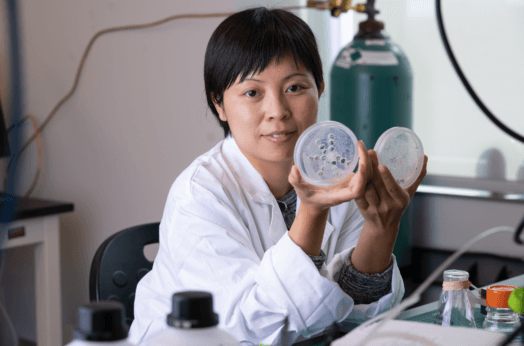
Susie Dai in her lab. Photography via Susie Dai.
Susie Dai’s friendly fungi
“Human beings are good at producing many new problems,” says Susie Dai about the spread of PFAS. As the associate professor of environmental sciences at Texas A&M University points out, however, the most pernicious part of PFAS chemistry—the “forever” carbon-fluorine bond—is also produced in nature, as part of the toxins made by a handful of mostly tropical plants.
Since those bonds are mirrored in nature, a natural solution also exists to break them, through the decomposing powers of bacteria and fungi. As described in a 2022 paper, Dai’s team took corn harvest wastes and processed them into a material that both filtered PFAS from wastewater and provided a substrate for Irpex lacteus, a fungus also called white rot, which is typically found on hardwoods. After adding PFAS to the medium and letting the fungus grow for two weeks, Dai confirmed that it had started to break down the pollutants.
But the process needs to happen at a much greater scale and speed to deal with the ubiquitous PFAS pollution introduced by humanity. Going forward, Dai plans to study the biological mechanisms white rot uses to destroy PFAS, with the goal of picking up the pace. “We’re adding an acceleration pedal,” she says.
An online community
Today, nearly all Americans have measurable PFAS levels in their blood.
“We’ve all been signed up for the study without our consent,” says Laurel Schaider, PhD, senior scientist at the Silent Spring Institute, a nonprofit research organization dedicated to understanding the links between chemical exposures and health. “We’re all part of this.”
PFAS-REACH (Research, Education and Action for Community Health) is a collaboration between research partners Silent Spring Institute, Northeastern University and Michigan State University, and community partners Testing for Pease, Slingshot and the Massachusetts Breast Cancer Coalition. The initiative has developed the PFAS Exchange, a free resource for communities affected by PFAS and anyone who wants to learn more about the chemicals.
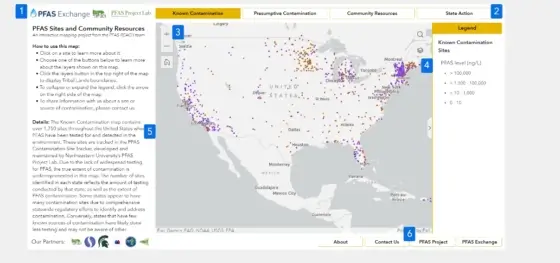
A screenshot of the Connecting Communities Map from the PFAS Exchange.
Among the site’s resources is the Connecting Communities map, led by the PFAS Project Lab. The map is an ArcGIS tool that allows people to see locations of known PFAS contamination, sites of presumed contamination, which states have passed PFAS regulations and conducted testing, locations of health and exposure studies as well as regional advocacy with whom people can connect.
PFAS Exchange also features the What’s My Exposure? tool. This is for people who have had their water or blood tested for PFAS. Schaider says it’s important to give people not only results but also enough context to understand what those results mean. The What’s My Exposure? tool allows people to enter in their test results and see how they compare to other people and areas.
“They can understand what their results mean—as well as anyone can—and they feel empowered to take action.”
This story is part of our ongoing PFAS series, The PFAS Problem: Demystifying ‘Forever Chemicals’


